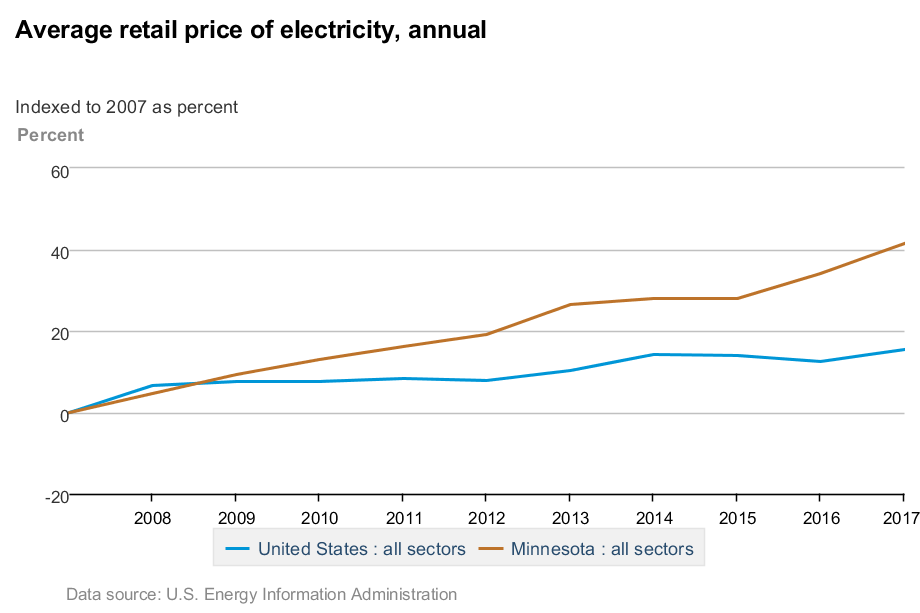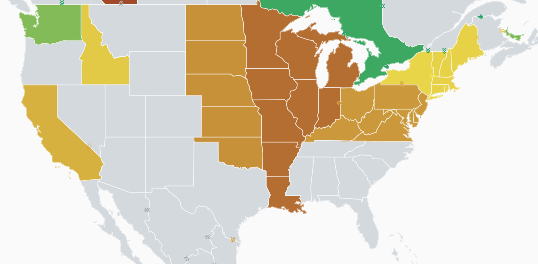Want “Carbon Free” Electricity? Promote Hydroelectric Power
Did you know that the Next Generation Energy Act (NGEA), Minnesota’s law that requires the state to obtain 25 percent of its electricity from renewable energy sources by 2030, explicitly prohibits counting electricity generated from large hydroelectric sources to measure compliance with the law?
The law was written this way to promote wind and solar power, but this special carve out for wind and solar has cost Minnesotans more than $15 billion, so far, and this spending spree is the primary reason our electricity prices have increased 26 percent faster than the national average since 2007.

Promoting wind and solar at the expense of other technologies, like hydroelectric power, has unnecessarily driven up the cost of our electricity, and delayed reductions in carbon dioxide emissions associated with electricity use in Minnesota by providing less incentive to purchase hydroelectric power from our friends in Canada.
Hydroelectric power is more desirable than wind and solar because it is more affordable, more reliable and more permanent.
Washington state derives more of its electricity from renewable energy sources than any other state in the country, yet it has the second lowest electricity prices. This is due entirely to the fact that hydroelectricity constitutes 78.9 percent of Washington’s electricity generation.

Furthermore, hydro is far more permanent than wind turbines, which only last for 20 years. In fact, many many of their hydroelectric dams there were built in the 1930’s and 1940’s as part of the public works projects associated with the New Deal. For example, the Grand Coulee dam began operating in 1942, 76 years ago, and is still the 5th largest producer of electricity in the country. Therefore, hydroelectric presents a far better value proposition both environmentally, and economically, than wind and solar.
While Minnesota has largely run out of suitable sites for new hydroelectric dams, Canada has not. Rather than creating special carve outs for unreliable, expensive, and relatively short-lived sources of energy like wind and solar, Minnesota should expand its definition of renewable to include all sources of renewable energy. This action will give Canadian power companies more incentive to build large dams that will have long lifespans, and generate electricity that is more affordable and more reliable.
It’s time to legalize large hydro in our state.